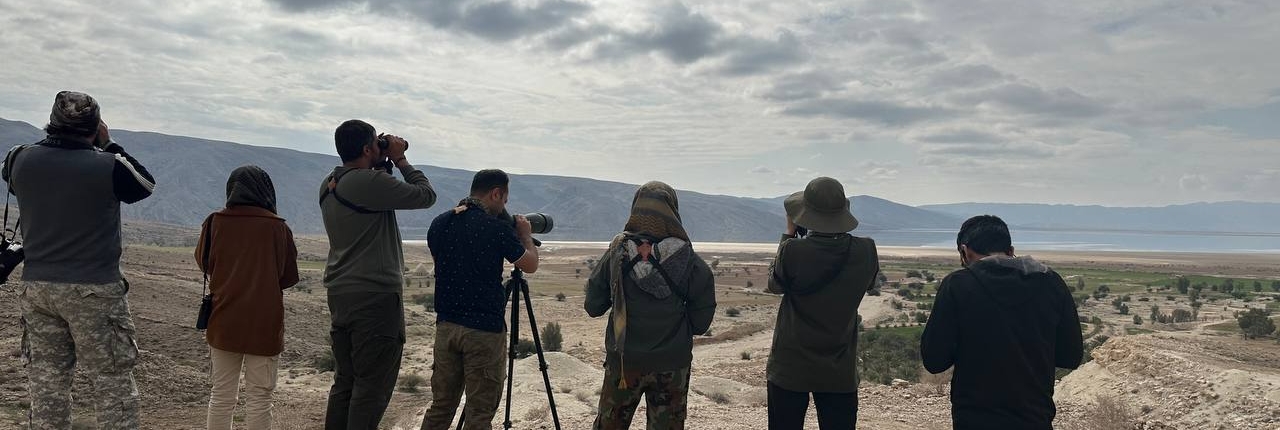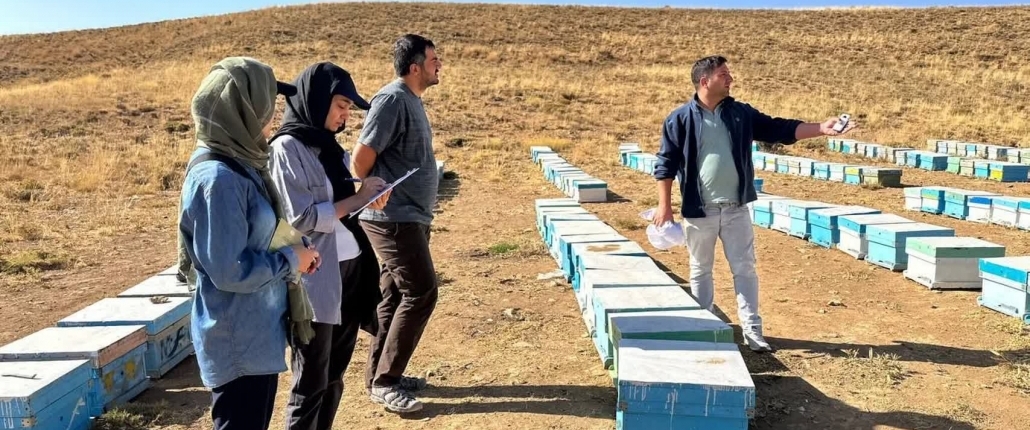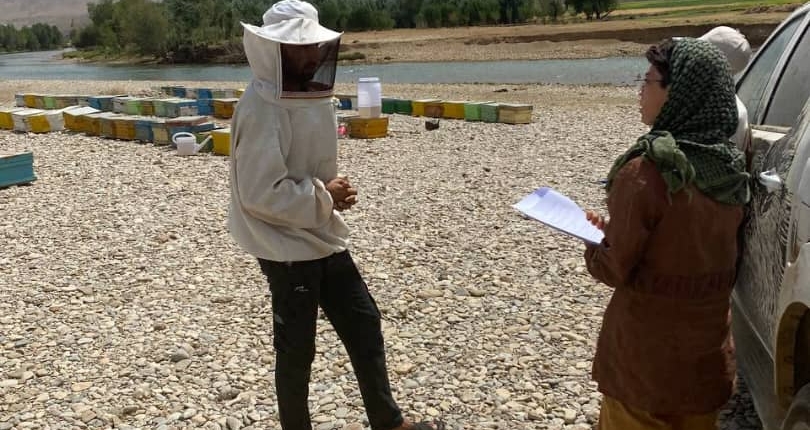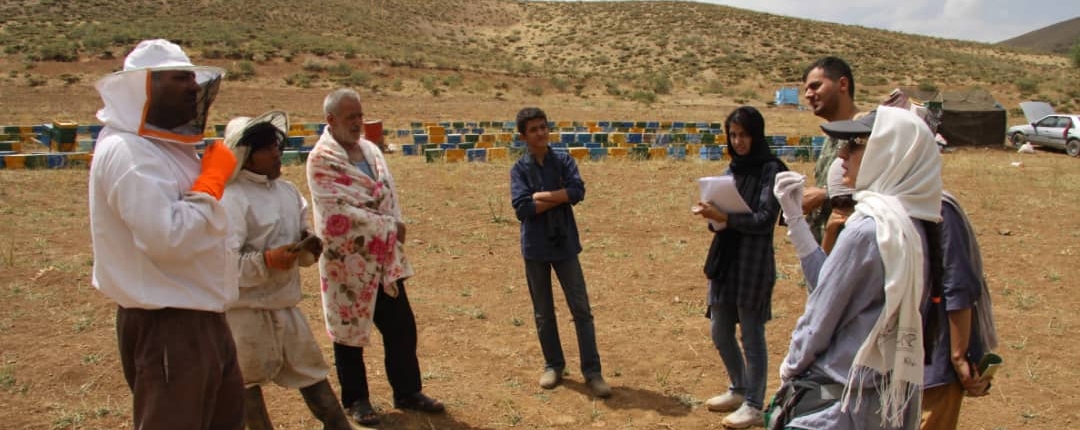Waterbird Census of Fars Province
Comprehensive Survey of Waterbird Populations in Fars Province Wetlands
In 2022, the DOE of Fars Province entrusted the AvayeBoom Bird Conservation Society with conducting the waterbird and shorebird census to ensure accurate data for wetland management decisions. AvayeBoom, the only NGO dedicated to bird conservation in central Iran, conducted the census in thirteen wetlands with the participation of local volunteers and enthusiasts, supervised by the DOE of Fars Province.
Key Findings
The census, following the standards of the Wetlands International waterbird census program, covered 13 sites over an area of 179,340.4 hectares, with an average of 85% coverage per site. Conducted in January and February, the census recorded a total of 20,027 birds from 76 species. The largest family counted was ducks, with 6,782 individuals. The highest bird population was recorded at Lake Tashk, despite most of this site being dry.
The most counted birds were flamingos with 4,437 individuals and common cranes with 3,726 individuals. In total, 10 species of birds of prey that depend on wetland habitats were observed. Among the endangered waterbirds and shorebirds observed were four species: the Dalmatian Pelican (NT), the Common Pochard (VU), the Ferruginous Duck (NT), and the Black-tailed Godwit (NT).
Acknowledgments
The AvayeBoom Bird Conservation Society extends its sincere gratitude to the DOE of Fars Province and to all the volunteers who participated in the census. Their dedication and hard work were instrumental in the successful completion of this project.
Collaborative Ecosystem Management in the Arzhan Wetland Area
The Collaborative Ecosystem Management project in the Arzhan Wetland area is executed by the Parishaan Heritage Association located in Kazeroon, in collaboration with SGP/UNDP in the Arzhan Wetland area. Some of the activities defined in this project are related to the development of birdwatching, increasing public awareness about birds in the local community, and supplementary studies on the birds of the area. The Avaye Boom Association and the Parishaan Heritage Association have signed a memorandum of understanding, according to which the birdwatching and ornithology part of this project has been assigned to Avaye Boom.
During this project, Avaye Boom conducted educational workshops in the area and produced visual content on birds in the Arzhan plains to increase public awareness of the biodiversity of birds and improve bird conservation. Also, the selection of a notable bird or birds of the area and the training of birdwatching guides in this project will be conducted by Avaye Boom.
It is worth mentioning that the collaboration between the Avaye Boom Association and the Parishaan Heritage Association has been ongoing for the past two years, and these two associations have been active in various fields alongside each other.
Final Report of the Project (Selection of the Flagship Species in the Arzhan Plains):
The Collaborative Ecosystem Management project in the Arzhan Wetland area concluded in 2023
The final report of Avaye Boom in the section on the selection of the flagship species is available for download below.
Gavkhouni Wetland Biodiversity Website Project
Enhancing Conservation and Awareness through Digital Engagement
The AvayeBoom Bird Conservation Society, in collaboration with the Isfahan Department of Environment, launched a project in June 2022 to design and build a comprehensive biodiversity website for the Gavkhouni International Wetland. The project was successfully completed in 2023 and can be visited at Gavkhouni Wetland Website.
Objectives and Goals
The primary goal of this initiative was to consolidate existing information on the biodiversity of the Gavkhouni Wetland into a single platform, thereby facilitating data access and encouraging research. The website also aims to empower the local community and stakeholders by providing them with a tool for necessary information dissemination and enhancing public awareness.
Content and Features
The website features extensive biodiversity checklists and detailed information on various species groups, including birds, reptiles, and mammals. It also houses a wealth of scientific studies, including reports, scholarly articles, and books related to the Gavkhouni Wetland. Interactive features include a virtual tour, a data center, an image gallery, and a video gallery, making it a rich resource for both casual visitors and serious researchers.
Community Involvement
Representatives from each stakeholder group can publish their content on the website, which may include opinions, notes, studies, or even artistic works and photographs. This inclusivity ensures that the website serves as a dynamic platform reflecting the diverse interests and contributions of the community.
Impact and Usage
Since its launch, the website has attracted over 34,000 visitors, indicating significant interest and engagement from the global community. This high traffic demonstrates the site’s value as an educational and research tool, contributing to the broader understanding and conservation of the Gavkhouni Wetland.
Contributors
The project was driven by the expertise of AvayeBoom Bird Conservation Society specialists, environmental scientists from the Isfahan Department of Environment, and local stakeholders, all of whom played crucial roles in the data collection and content creation phases.
Future Directions
With the website now a central hub for information on the Gavkhouni Wetland, future plans include regular updates and expansions to the data and features offered. This ongoing development will continue to support conservation efforts and stimulate community involvement.
Controlling the Conflict Between Beekeepers and Bee-Eaters
Collaborative Efforts to Mitigate Human-Wildlife Conflict and Protect Ecosystems
In many regions across Iran, beekeepers consider bee-eaters a significant threat to their hives and honeybees. Each bee-eater can consume a large number of bees daily. Since these birds live in groups, their encounter with honey production hives during migration can cause substantial losses for beekeepers. This has led to widespread conflict between bee-eaters and beekeepers. One method commonly used by beekeepers to mitigate this issue is poisoning, using bees laced with pesticides like diazinon. Unfortunately, this practice not only kills valuable bee-eater species but also introduces harmful chemicals into the ecosystem, affecting other wildlife that consume the poisoned birds and contaminating the food chain.
Project Objectives and Implementation
The AvayeBoom Bird Conservation Society began studying this issue in 2020 and developed an educational and advisory catalog. This catalog introduces the bee-eater, highlights its ecological importance, and compiles various methods to reduce conflicts between bee-eaters and beekeepers, both locally and globally.
Given that center of Iran has over 30,000 beekeepers, specific hotspots of conflict were selected as pilot areas for the project. The Society engaged directly with beekeepers, providing the catalog and educational insights. Beekeepers’ opinions and suggestions were gathered through questionnaires to ensure their feedback was considered.
Key Aspects of the Project
Financial Support: The project is financially supported by Nazre Tabiat NGO through public donations.
Pilot Areas: Three pilot areas were selected based on evidence of conflict hotspots.
Education: Beekeepers were taught on-site at their work locations, addressing specific reasons for increased conflicts.
Evaluation: A pre-test was conducted with all beekeepers, and a post-test will follow to estimate the project’s impact.
Outcomes and Future Steps
The data collected from beekeepers’ feedback will be analyzed by the project’s biodiversity expert to create final content suitable for future educational and research initiatives. This project aims to reduce environmental hazards associated with chemical pest control, protect bee-eaters from poisoning, and promote sustainable coexistence between beekeepers and bee-eaters.
Acknowledgments
The AvayeBoom Bird Conservation Society extends its sincere gratitude to Nazre Tabiat NGO for their financial support and to all the beekeepers who participated in the project. This joint effort highlights the importance of collaboration in resolving human-wildlife conflicts.
Waterbird Census of Hormozgan Province
Comprehensive Survey of Waterbird Populations in Hormozgan Province
The Department of Environment (DOE) in Hormozgan Province, in collaboration with the AvayeBoom Bird Conservation Society, recently completed an extensive waterbird census. This project aimed to monitor waterbird habitats and assess the population and diversity of waterbirds within the province. Beyond data collection, the initiative sought to facilitate knowledge transfer, foster cooperation between governmental bodies and non-governmental organizations, and train local volunteers. Over the past two years, at least ten volunteers have been actively involved, gaining invaluable field experience and skills to implement similar projects in the future.
Methodology
The census covered more than 32 wetlands over a total area of 175,135 hectares, successfully monitoring 76% of these regions. The methodology involved using boats and 4WD vehicles, with experts utilizing binoculars and telescopes to identify and count birds. Over 240 km were covered by boat, more than 1,100 km by 4WD, and additional distances on foot. In high-density areas, simultaneous counting by two experts ensured accuracy. The census was conducted over 20 days from January 24th to February 13th, 2023.
Key Findings
The census recorded an impressive 64,123 waterbirds spanning 97 species, including several near-threatened and vulnerable species such as the Dalmatian Pelican and the Common Pochard. The highest bird counts were observed in Khoor-e Khooran, Rud-e Shur, and the eastern coast of Bandar Abbas.
Training Local Volunteers
AvayeBoom actively involves local volunteers in its projects. For this census, at least ten volunteers were trained and equipped to conduct similar projects independently in the future. This approach ensures the success of current projects while building local capacity and expertise, fostering sustainable conservation efforts. Training local volunteers is a core value of AvayeBoom, empowering communities to take an active role in protecting and managing their natural resources.
Report Availability
The full report is now available for download, offering detailed insights into the findings and methodologies of this significant project.
Acknowledgments
The AvayeBoom Bird Conservation Society extends its sincere gratitude to the DOE of Hormozgan Province and to all the volunteers who participated in the census. Their dedication and hard work were instrumental in the successful completion of this project

You can also watch a clip of this project here:










